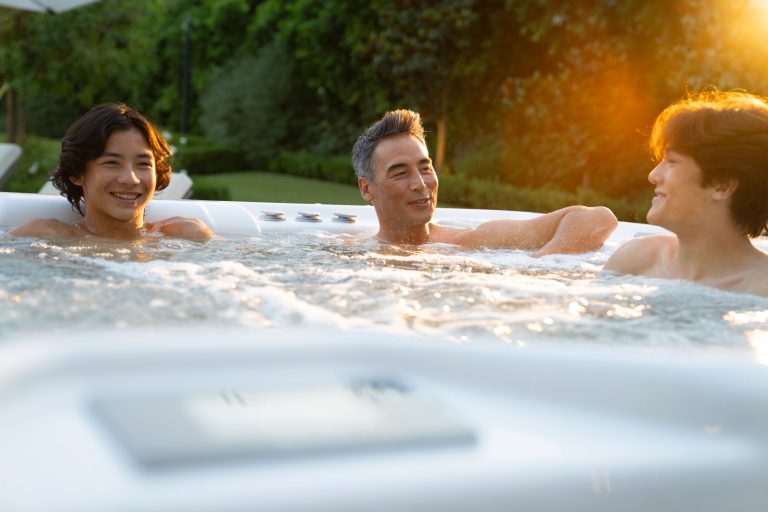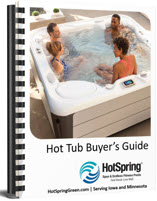
Hot Tubs & Cold Plunges For Ultimate Wellness
If you’re looking to enhance your health and wellness routine, you’ve come to the right place! The combination of hot tubs and cold plunges — known as contrast therapy — offers a range of impressive benefits that can transform your physical and mental well-being. Let’s dive into how these therapies work and how to incorporate them into your life.
Why Hot Tubs Are More Than Just A Soak
Hot tubs have been a favorite for relaxation, but did you know they come with a whole host of health benefits? Whether you’re using a traditional hot tub or a saltwater one, you’re in for some serious perks.
The Scoop On Salt Water Hot Tubs
Salt water hot tubs are becoming increasingly popular, and for good reason! Here’s what makes them special:
- Gentler on Your Body: The salt increases the water density, giving you better buoyancy. This means less pressure on your joints and muscles — perfect for anyone with aches and pains.
- Skin Benefits: Salt water feels silky smooth on your skin and can help with hydration. Plus, it may reduce inflammation, making it a great choice for those with skin sensitivities.
- Fewer Chemicals: Saltwater systems generate chlorine from salt, which means lower levels of harsh chemicals in the water. Your skin will thank you!
- Muscle Relaxation: The magnesium in salt water can help relax your muscles and improve nerve function, making it easier to unwind after a long day.
Traditional Hot Tub Benefits
Don’t count out traditional hot tubs! They also offer fantastic health benefits:
- Heart Health: Regular use can improve blood flow and support overall cardiovascular health.
- Stress Relief: The warm water is incredibly soothing, helping to melt away stress and tension.
- Better Sleep: Enjoying a soak before bedtime can lead to improved sleep quality — who doesn’t want that?
- Pain Relief: If you suffer from joint or muscle pain, the heat and buoyancy of hot tubs can provide much-needed relief.
The Chill Factor: Cold Plunges
Now let’s talk about cold plunges! These may sound daunting, but they come with some impressive health benefits:
- Speedy Recovery: Cold water immersion can help reduce muscle soreness and inflammation, making it a favorite among athletes and weekend warriors.
- Boost Your Immune System: Regular cold plunges may help strengthen your immune system, keeping those pesky colds at bay.
- Mood Booster: Cold exposure has been linked to reduced symptoms of depression and anxiety, plus it can give you an energy boost!
- Metabolism Kick: Cold plunges activate brown fat cells, which can help increase calorie burning — great news if you’re looking to manage your weight!
The Magic of Combining Hot & Cold Therapy
Using hot tubs and cold plunges together can amplify the benefits of both:
- Better Circulation: Switching between hot and cold stimulates blood flow, which is great for overall health.
- Faster Recovery: Alternating temperatures can reduce inflammation more effectively than either method alone.
- Detox Support: This approach helps stimulate your lymphatic system, aiding in detoxification and immune function.
- Mental Toughness: Practicing contrast therapy can also build mental resilience, helping you handle stress better.
How To Get Started With Contrast Therapy
For Regular Exercisers
- Start with a 10-15 minute soak in the hot tub after workouts.
- Follow it up with a brisk 1-2 minute cold plunge.
- Repeat this cycle 2-3 times.
- Aim for 2-3 sessions per week to see improvements!
For Serious Fitness Buffs
- Begin with a longer 15-20 minute soak in the hot tub.
- Transition to a 2-3 minute cold plunge.
- Repeat this cycle 3-4 times.
- Consider doing cold plunges alone after strength training sessions to aid recovery without hindering muscle growth.
Always listen to your body. If you’re unsure about starting any new wellness routine, especially if you have existing health issues, consult with a healthcare professional first.
Ready To Transform Your Health?
If you’re excited about experiencing the incredible benefits of contrast therapy for yourself, Hot Spring Spas of Iowa and the Twin Cities is here to help. Don’t miss out on this chance to invest in your well-being! Visit our showrooms today — your journey toward optimal health starts now!
The post Unlock The Power Of Contrast Therapy appeared first on Hot Spring Spas of Iowa and the Twin Cities.



